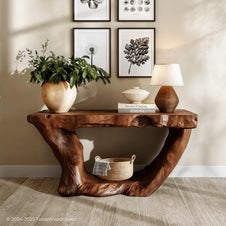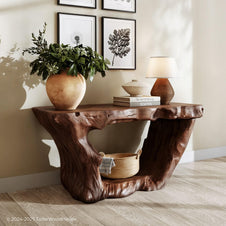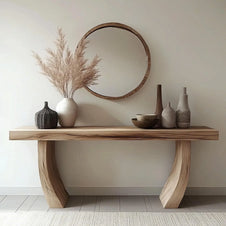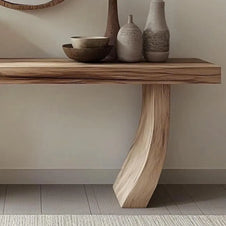Hanging wooden art can be tricky - you want it secure, level, and visually stunning without damaging your walls. In this guide, you’ll discover how to hang wooden art on wall using simple tools, safe techniques, and creative styling ideas. Plus, you’ll find inspiration from unique pieces that can transform your home into a gallery-worthy space starting today.
Now let’s get started with us!
and inspiration to transform any blank wall into an eye-catching focal point.
Essential Gear Before You Start
Before you even pick up a hammer, having the right tools will save you time, protect your walls, and keep your art safe. Many people who are learning how to hang wooden art on wall make the mistake of starting with whatever’s in the toolbox - only to end up with crooked pieces or damaged plaster.
Here’s your go-to checklist:
-
Measuring tape & pencil – for accurate positioning and marking
-
Level – ensures the piece is perfectly straight
-
Stud finder – locates strong wall support for heavier art
-
Drill & screws – for secure mounting
-
Wall anchors – especially for plaster or drywall without studs
-
Hanging wire or D-rings – depending on your art’s design
If you’re planning to hang something substantial, such as the handcrafted Wall-Mounted Driftwood Wall Art, investing in quality wall anchors is essential. Using the correct hardware is one of the most important steps in how to hang wooden art on wall securely and beautifully.

Selecting the Best Mounting Approach
The right installation method can make or break your display. When deciding how to hang wooden art on wall, you need to consider your wall type, the size and weight of your piece, and the style you want to achieve. Choosing the wrong hardware can lead to sagging, crooked placement, or even damage.
Quick Hooks for Lightweight Pieces
Nails and standard hooks work well for small or medium wooden art. They’re fast and affordable, but not designed for very heavy pieces. This is often the first method people think of when figuring out how to hang wooden art on wall for simple décor.
Anchor Systems for Solid Support
For heavier designs - especially handcrafted or dense wooden panels - plastic or metal wall anchors keep your art stable even when studs aren’t available. This is a proven method in how to hang wooden art on wall safely, particularly for renters or those with plaster walls.
Floating Hardware for a Clean Look
Hidden brackets or floating mounting systems create a modern, streamlined effect. While they take more time to install, they hide all the hardware behind the art.
For more detailed hardware recommendations, see Home Depot’s picture hanging guide to match your wall type and artwork weight.
Step-by-Step Setup for Perfect Placement
Getting your artwork perfectly aligned isn’t just about hammering in a nail - it’s about preparation, accuracy, and understanding the best method for how to hang wooden art on wall without stress. These steps will help you achieve a balanced, professional look every time.
Measure Your Wall Space
Start by measuring the total wall area where your wooden art will be displayed. This ensures the piece isn’t too high, too low, or off-center. If you’re hanging multiple items, leave enough spacing between each piece for visual breathing room.
Mark the Hanging Points
Use painter’s tape or a light pencil mark to note where the hardware will go. For larger art, measure the distance between mounting points on the back of the frame so your wall marks match perfectly.
Check for Studs or Use Anchors
Studs offer the most secure hold for heavy wooden art. If your desired placement doesn’t align with a stud, use strong wall anchors to prevent sagging or damage over time. This is especially important when learning how to hang wooden art on wall in a way that lasts.
Level Before You Drill or Hammer
A spirit level will ensure your artwork hangs perfectly straight. Even a few degrees off can be noticeable, especially for geometric or symmetrical designs.
Install Hardware and Hang
Whether you’re using hooks, brackets, or a floating mount system, follow the manufacturer’s instructions carefully. Once your piece is up, step back and assess from different angles to ensure it’s visually balanced with the room.
By following these steps, you’ll not only protect your walls and artwork but also create a display that looks intentional and beautifully finished.
Design Inspiration: Wooden Art That Makes a Statement
Choosing where and how to place your wooden art can make the difference between “nice decoration” and “conversation starter.”
Create a Balanced Gallery Wall
Mixing wood art with framed prints, metalwork, or mirrors gives a dynamic look. Place a statement piece - like the Abstract Driftwood Wall Art - in the center and surround it with smaller works for balance.

Highlight Furniture with Strategic Placement
Positioning art above sofas, beds, or mantels naturally draws the eye upward and frames the furniture below. For oversized wood sculptures, ensure the wall height leaves breathing room above and below the piece.
(For more creative combinations, see favorite ways to hang wall art for styling inspiration.)
Mistakes That Can Ruin the Look
Even if you already know how to hang wooden art on wall, avoiding these common mistakes will ensure your display stays flawless:
-
Incorrect Height Placement – Hanging the piece too high or too low can disrupt the visual balance of your wall. Aim to position the center of the artwork at eye level for the most harmonious look.
-
Skipping Precise Measurements – Guessing the position often leads to uneven or crooked arrangements. Always use a measuring tape, level, and painter’s tape to mark exact spots before drilling or hanging.
-
Ignoring Lighting – Without proper lighting, the natural texture and grain of your wooden art can look dull. Add wall sconces, picture lights, or adjustable spotlights to highlight the piece’s beauty.
-
Using the Wrong Wall Anchors – Heavy wooden art requires strong anchors or studs for support. Choosing the wrong hardware can cause the piece to tilt, fall, or damage your wall.
-
Neglecting Wall Compatibility – Certain wall types, like plaster or drywall, require specific installation methods. Always match your mounting hardware to your wall surface to ensure safety and stability.
Caring for Wooden Art Over Time
Once your piece is perfectly placed, a little care will keep it beautiful for years.
-
Dust with a soft microfiber cloth to avoid scratches
-
Keep out of direct sunlight to prevent fading or warping
-
Re-tighten or check hanging hardware every few months
This is especially important for natural, untreated designs such as the Driftwood Wall Sculpture, where wood movement can happen with changes in humidity.

Finding the Right Piece for Your Space
Choosing the perfect artwork is the first and most important step when you’re figuring out how to hang wooden art on wall. The right piece will not only complement your décor but also bring warmth and personality into your home. Keep these tips in mind:
-
Match Your Style – If your home has a rustic or coastal vibe, driftwood wall art can be the perfect choice. Its organic shapes and textures create a natural focal point, blending effortlessly into earthy interiors.

-
Consider Size and Scale – Oversized wooden art makes a statement but can overwhelm small rooms. For tighter spaces, a series of smaller pieces can create impact without feeling cramped.
-
Choose a Focal Point – Select an area where your artwork can shine, such as above a sofa, bed, or mantel. This is especially important when learning how to hang wooden art on wall in spaces where balance matters.
-
Think About Color Tones – The wood’s natural hue should complement your existing color palette. Light woods can make a room feel airy, while darker woods add depth and sophistication.
-
Prioritize Quality Craftsmanship – Handcrafted wooden art pieces tend to have unique textures and details that elevate the overall look of your space.
FAQs
1. What is the safest way to hang heavy wooden art on wall?
For heavy pieces, the safest method is using wall anchors or mounting directly into wall studs. This prevents sagging and ensures the art stays secure over time.
2. Can I learn how to hang wooden art on wall without drilling?
Yes, lightweight wooden art can be hung with adhesive strips or removable hooks. However, for larger pieces, drilling is recommended for safety.
3. How do I make sure my wooden art is level when hanging?
When learning how to hang wooden art on wall, always use a spirit level before securing the hardware. Mark drill points carefully and check alignment twice.
4. Does the wall type affect how to hang wooden art on wall?
Absolutely. Drywall, plaster, brick, and concrete each require different hardware. Choosing the wrong method can damage both your wall and the artwork.
5. What tools do I need for how to hang wooden art on wall?
Basic tools include a measuring tape, pencil, level, drill, screws or anchors, and hanging wire or D-rings depending on your art’s weight and design.
Conclusion
Mastering how to hang wooden art on wall means pairing the right tools with a clear plan and a bit of design vision. From the first pencil mark to the final dusting, each step ensures your piece isn’t just hung - it’s showcased. With these tips and a few standout designs, your walls will never feel empty again.




















